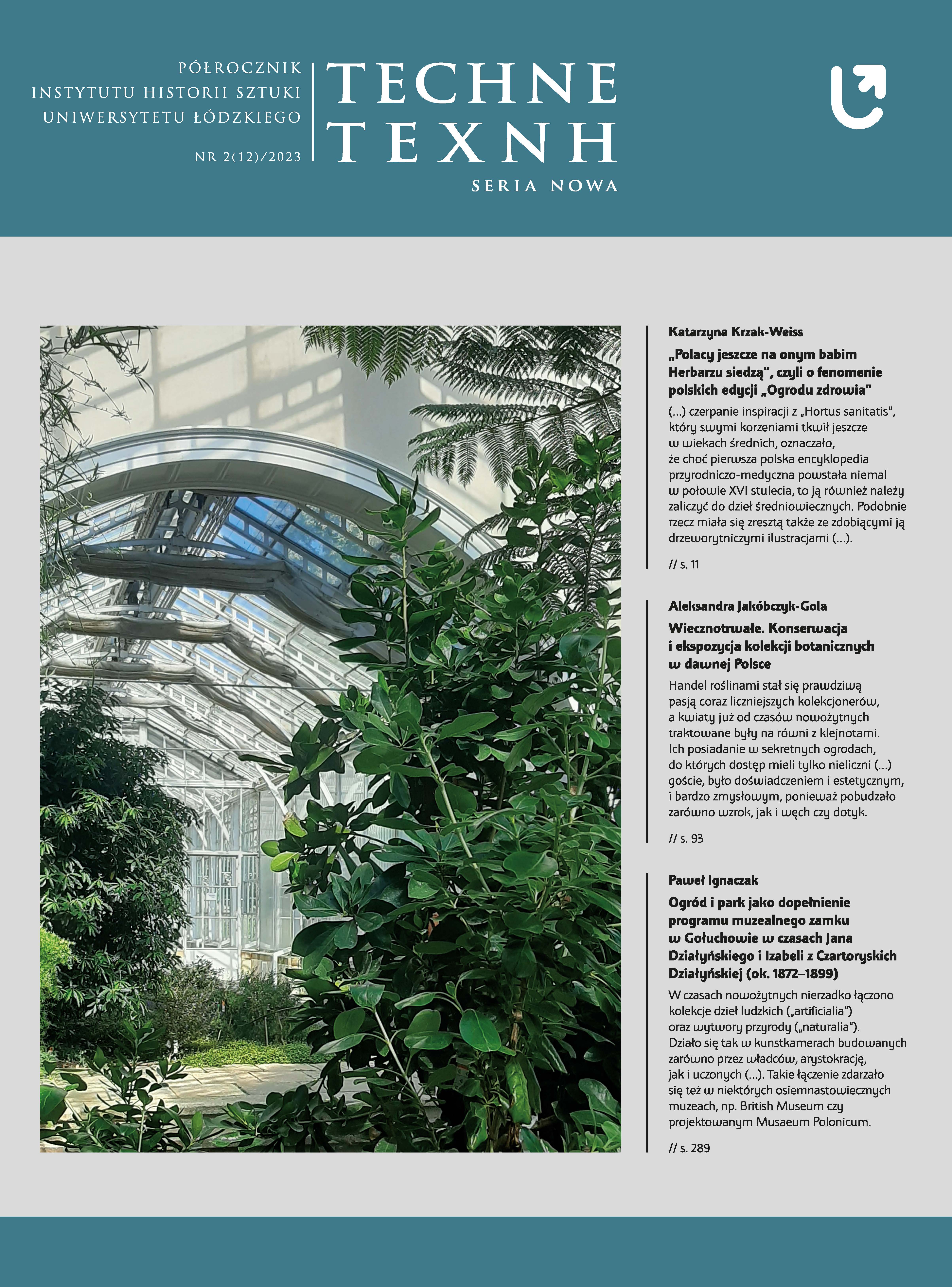„Ogrody Hesperyd” – XVIII-wieczne kolekcje roślin oranżeryjnych w Polsce. Analiza zasobu
”Gardens of the Hesperides” – 18th-century collections of orangery plants in Poland. Resource analysis
Author(s): Seweryn MalawskiSubject(s): History, Fine Arts / Performing Arts, Social history, Modern Age, Special Historiographies:
Published by: Wydawnictwo Uniwersytetu Łódzkiego
Keywords: orangeries; reenhouses; collections; gardens; citrus; oranges; Hesperides
Summary/Abstract: The fashion for collecting rare plants in Europe dates back to the Renaissance. In the eighteenth century, conservatories and the collections of exotic plants were an important components of the estates of the Polish nobility. Generous collections were maintained not only by the royal courts headed by the king John III Sobieski, Augustus II or Stanislaus Augustus, but also by many aristocratic families. Knowledge about the collections of conservatory plants of that times is provided by e.g. preserved garden inventories. There are known lists of plants from the conservatory in Wilanów from the time of Elżbieta Sieniawska (1729), the Radziwiłł’s residence in Alba (1738, 1758) and Nyasvizh (1776) as well as Biała Podlaska (1781), Nieborów in the property of Helena and Michał Radziwiłł (1784), in the Branicki’s residence in Białystok (1771–1772) or the Potulicki’s residence in Przemyków (1778, 1789). The most frequently cultivated plants were citrus (Citrus L.), mainly C. aurantium L. and C. limon (L.) Osbeck, as well as Lauru nobilis L. In most collections, species such as: Genista hispanica L., Myrtus communis L., Prunus laurocerasus L., Punica grantum L., Rosmarinus officinalis L. were frequently found, as well as Ficus carica L., Buxus sempervirens L., Cupressus sempervirens L., Aloe sp. and Teucrium marum L. More than half of the analysed inventories recorded the presence of: Dianthus caryophyllus L., Yucca gloriosa L. and Taxus baccata L. Viburnum tinus L. and Adenanthera pavonina L. Less frequently appeared species like Nerium oleander L. or Erysimum × cheiri (L.) Crantz). Not all species have been identified, but the rich collections and popularity of the conservatories testify to the popularity and importance of exotic plants in 18th-century gardens in Poland.
Journal: TECHNE. Seria Nowa
- Issue Year: 2/2023
- Issue No: 12
- Page Range: 177-204
- Page Count: 28
- Language: Polish

